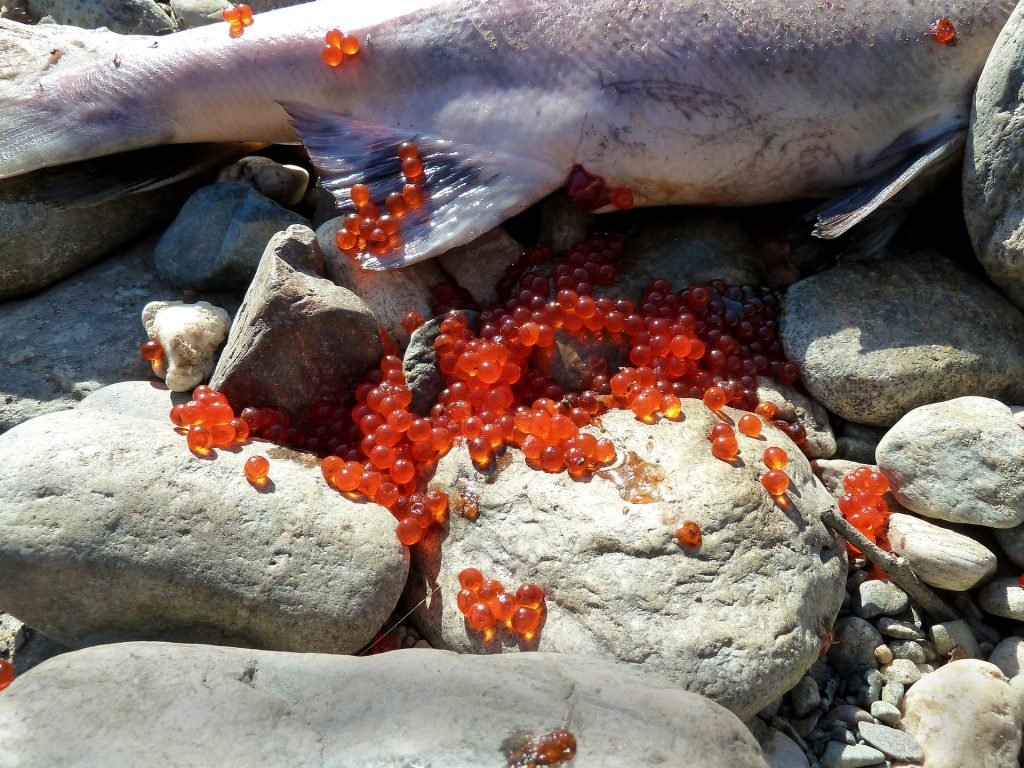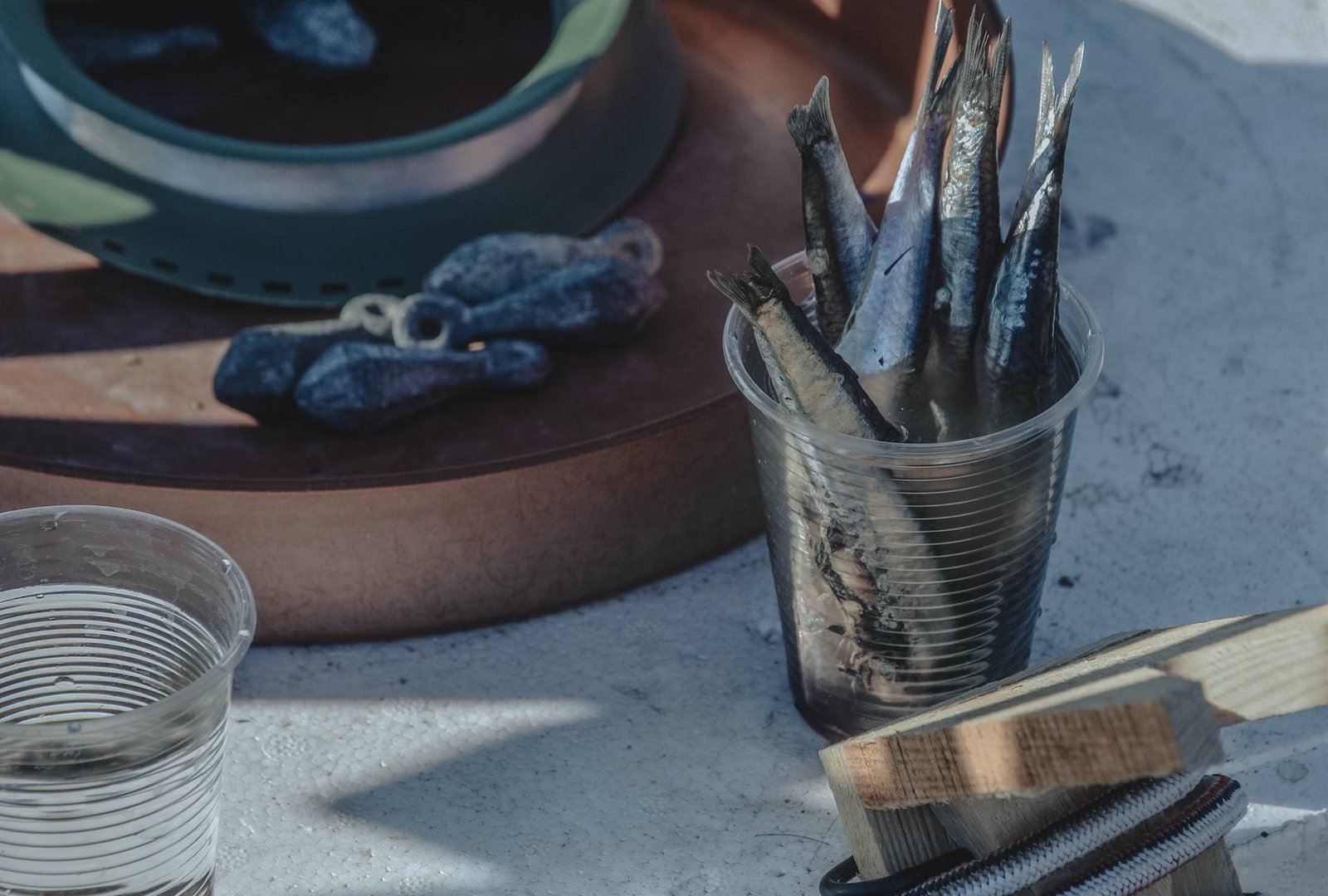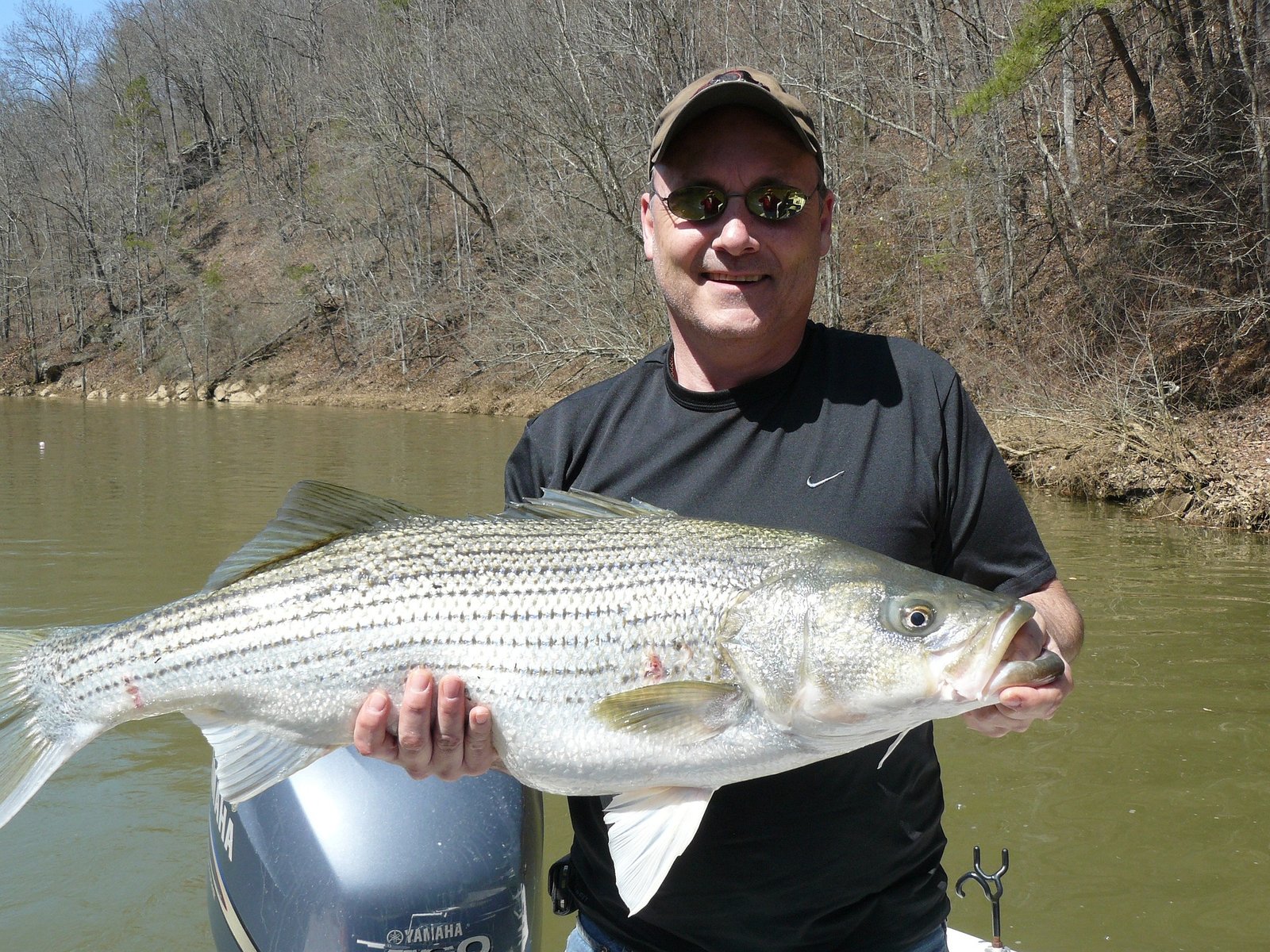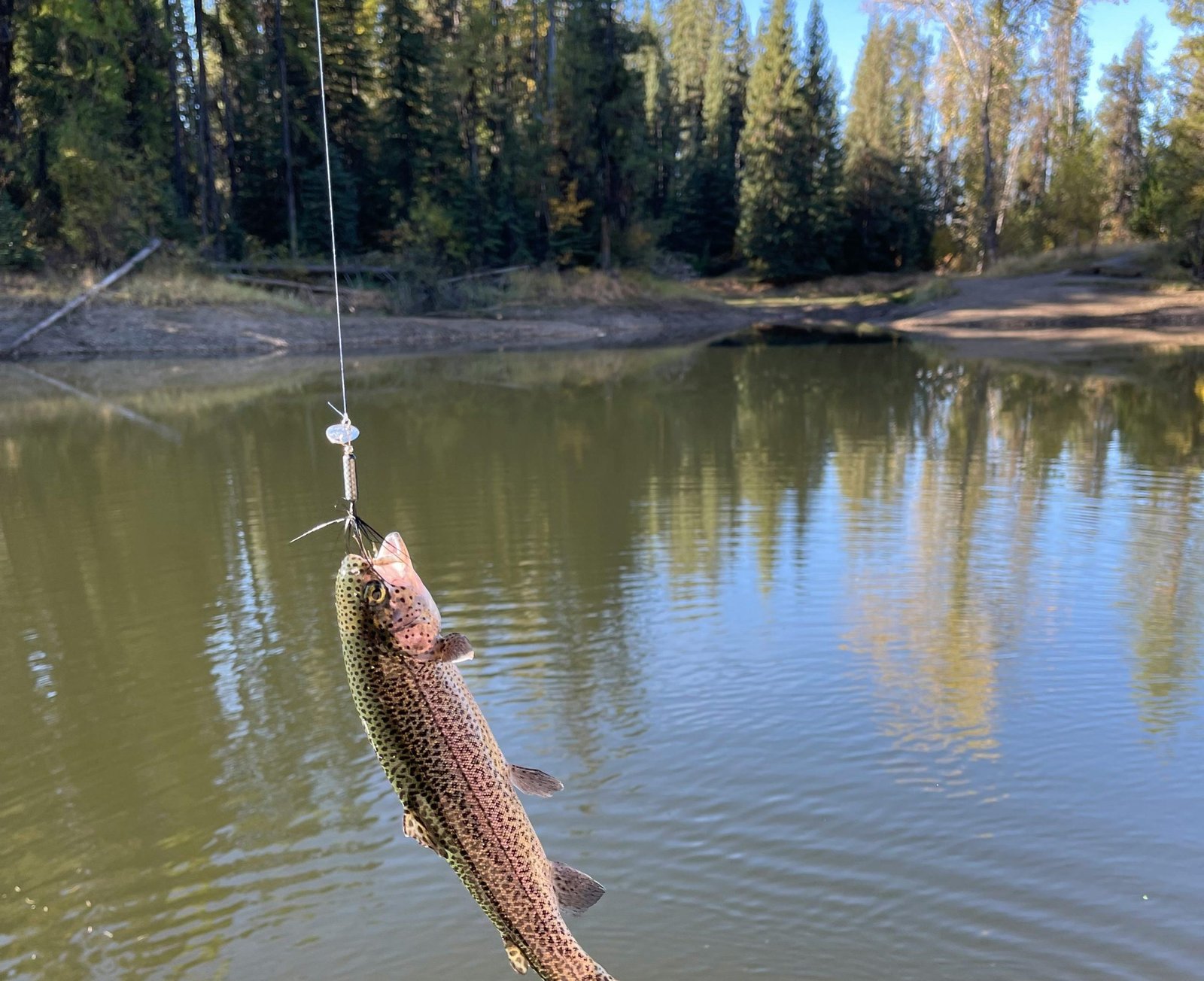
Salmon fishing is a popular activity enjoyed by many anglers around the world.
As you venture into the thrilling experience of catching these magnificent fish, one of the key factors to success is choosing the best bait.
There is a wide variety of lures and baits available on the market, each designed to effectively attract salmon.
While the bait you use can play a big role in whether salmon bite or not, oftentimes your presentation leads to a hook-up or lost fish.
Before you start searching for the best baits for salmon, you need to make sure that your presentation is right first. This means you need a fine leader (that will still support the weight of the salmon) and the right hook size for your bait.
In addition to artificial lures, using natural bait like roe is a proven method to hook salmon. Roe, derived from the eggs of fish such as salmon and trout, is a nutrient-rich delicacy that many fish species find irresistible.
The shiny, translucent appearance of roe makes it a favorite amongst both novice and experienced anglers.
But there are many other baits that can be just as effective as salmon eggs.
Combining your knowledge of these various bait options with proper fishing techniques will greatly increase your chances of landing some impressive salmon.
Let’s see the best baits for salmon fishing.
Top Baits for Salmon
))/565969.json)
Salmon Eggs
One of the most effective and popular baits for salmon is salmon eggs.
Salmon have a strong instinct to consume their own eggs, making them an irresistible option. To properly use salmon eggs as bait, thread them onto your hook with care, ensuring they are presented in a natural manner.
The best option for salmon eggs is using fresh or cured salmon roe. When used correctly, this bait can greatly increase your chances of catching salmon.
Spawn Bags
Spawn bags are an excellent alternative to using individual salmon eggs, especially when dealing with finicky salmon.
Spawn bags consist of a small, mesh bag filled with salmon eggs which is then attached to your hook. This method provides an added bonus of preventing the eggs from coming off the hook as easily and attracting more salmon due to the increased scent dispersion.
Just like with salmon roe, natural presentation is crucial for the effectiveness of spawn bags.
Trout Beads
))/1987401.json)
Trout beads are a popular and effective artificial alternative to natural salmon eggs.
These small, plastic beads are designed to imitate a drifting egg in the water, attracting salmon to bite.
To use trout beads, match the bead size and color to the natural eggs in the river you are fishing, and rig it using a single hook setup.
This bait is a good option for those who prefer not to use live bait or have difficulty obtaining fresh salmon roe.
Plastic Worms & Grubs
))/4522938.json)
Plastic worms and grubs are versatile baits used for many fish species, including salmon.
These artificial baits can be rigged in various ways, such as on a jig head or directly to the hook.
The key to using plastic worms and grubs effectively is selecting the appropriate size, color, and action to match the natural prey of salmon in the area you’re fishing.
Plastic worms and grubs are especially useful in situations where the use of natural bait such as salmon eggs or live shrimp is not possible.
Skein
Skein, the entire membrane sac containing salmon eggs, is considered one of the best salmon baits by many experienced anglers.
This natural bait is extremely effective due to its high visual appeal and scent, which is unmatched by most other baits.
To use skein effectively, ensure that it is cured correctly and securely attached to your hook.
The presentation and scent combination provided by skein is sure to entice salmon and improve your hook-up rate.
Shrimp
Shrimp, especially sand shrimp, are another attractive form of bait for salmon.
Sand shrimp have a particular scent and texture that salmon find hard to resist.
You can use live or fresh dead shrimp, either threaded on a hook or in combination with other baits such as salmon roe.
Ensure proper presentation by rigging the shrimp on your hook in a natural manner, with the tail facing upward.
Frequently Asked Questions

What type of lures are most effective for river salmon fishing?
Spinners, spoons, jigs, and plugs are among the most effective lures for river salmon fishing. Each of these lures have unique characteristics that attract salmon, but they all share the ability to create movement, flash, and vibration in the water. When selecting lures, consider the water conditions and the natural prey in the area to increase your chances of success.
Which live baits are preferred by anglers targeting salmon?
Live baits, such as shrimp, minnows, and even smaller fish like herring or anchovies, are preferred by many anglers targeting salmon. Shrimp and minnows are particularly effective in river settings, while herring and anchovies are commonly used in ocean environments. Additionally, artificial baits like plastic grubs, flies, and egg clusters can also be effective for salmon fishing.
What strategies should beginners employ when fishing for salmon from the shore?
When fishing for salmon from the shore, beginners should follow these strategies:
- Research the feeding habits and preferred habitats of the salmon species you are targeting.
- Choose a location near structures or natural features that may attract salmon, such as river mouths, rocky outcrops, or weed beds.
- Use appropriate gear, such as a medium-heavy rod and a reliable reel with a line capable of handling the size of the fish.
- Experiment with different lures and baits, keeping in mind the water conditions and the natural prey of the salmon in the area.
How do you set up tackle specifically for salmon fishing?
To set up tackle for salmon fishing, you’ll need:
- A medium-heavy to heavy rod, typically 8-10 feet in length.
- A suitable reel, such as a spinning or baitcasting reel, with enough line capacity for the size of the fish and the depth of water you are fishing in.
- A strong line, with a test strength appropriate for the size and species of salmon you are targeting.
- Leaders, swivels, and snaps, which can help reduce line twist and make changing lures easier.
- A variety of lures and baits that are known to be effective for the species of salmon you are targeting, as well as any necessary terminal tackle (such as hooks, sinkers, and floats).
Which colors of lures yield the best results when fishing for salmon?
The choice of lure color depends on factors such as water clarity, light conditions, and the species of salmon being targeted. Generally, bright colors like red, orange, and chartreuse are effective in low light conditions or murky water, while more natural colors such as green, blue, and silver are better suited for clear water and brighter conditions. Additionally, some salmon species may have specific color preferences, so it’s essential to research and experiment to find the most effective colors.
What are the recommended techniques for catching salmon in the ocean?
When fishing for salmon in the ocean, trolling is one of the most effective techniques. Utilizing flashers with hoochies, or baitfish like herring or anchovies, can attract salmon. Downriggers, planer boards, and divers can help maintain control of your bait’s depth and ensure it stays in the optimal strike zone. Drifting or vertical jigging with spoons and jigs can also be successful in areas known for holding salmon. Additionally, using a chum bag or chum line can help bring salmon closer to your location.




